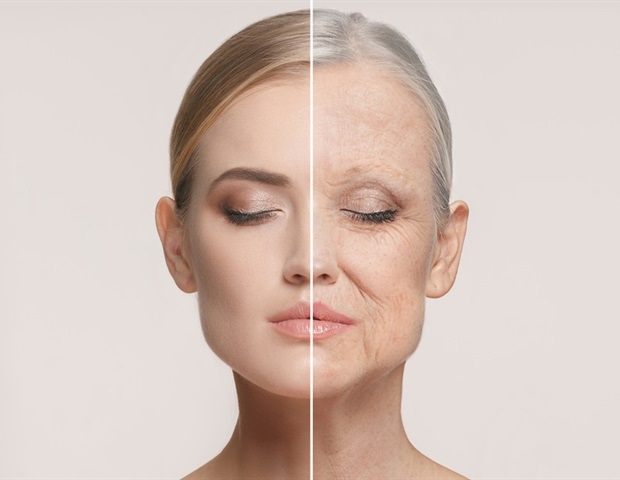These new models were developed with the leading esports team Fnatic. By combining Fnatic’s insights into gaming gear with Sony’s long-standing expertise in hardware technology, the collaboration has produced a lineup designed to elevate the FPS gameplay experience.
Additionally, the INZONE E9 in-ear headphones have been approved for use at the Apex Legends Global Series Year 5 Championship, helping professional players concentrate on their competition with comfortable gameplay, FPS optimized sound, and superior noise isolation.
INZONE H9 II Noise Canceling Wireless Gaming Headset– built for the best, with the best
The INZONE H9 II is INZONE’s flagship wireless gaming headset offering high-quality sound and noise cancellation in a lightweight design with a detachable microphone. Built around the driver unit in Sony’s new critically acclaimed WH-1000XM6 wireless noise canceling headphones, the H9 II delivers full-spectrum clarity, for in game footsteps or unsettling deep rumbles.
The INZONE H9 II also features a directional cardioid boom microphone that picks up voices clearly while cutting ambient noise. Its long and adjustable boom mic stays exactly where it is placed. In addition, surrounding noise gets filtered out with AI-optimised precision, so teammates hear more of the user’s voice, loud and clear.
Plus, with a Super Wide Band (SWB) mic, the INZONE H9 II can deliver clear, more natural sound than ever before, to ensure every callout sounds crisp and competition ready.
The H9 II weighs just about 260g1 and features a redesigned headband structure that evenly distributes weight, so the headset stays comfortable through long sessions.
For intense gaming, the supplied USB-C® dongle offers a dedicated ultra-low-latency 2.4GHz connection2. LE Audio and Bluetooth® pairing maintains a simultaneous connection for players to enjoy low-latency gameplay while maintaining connection to their smartphone for calls and notifications. All with up to 30 hours battery life between charges3. A soft pouch is included to easily carry and transport the headset.
Nothing but the game with the INZONE E9 In-Ear Monitor for Gaming
New to the INZONE line up is the INZONE E9 compact wired in-ear gaming earbuds tuned for FPS games, delivering precise sound and competitive audio performance.
With sound tuning developed through feedback from Fnatic, the INZONE E9 ensures players can hear footstep, reloads, and distant threats before getting caught.
The INZONE E9 has a compact design for a snug fit with pressure-free wear. There is an option to swap between noise-isolation foam tips or silicone hybrid tips in multiple sizes for all-day comfort.
The INZONE E9 hosts Sony’s first fully enclosed structure, and combined with the noise isolation ear tips, they achieve superior passive noise isolation for more focused sound. These in-ear monitors are designed to reduce sounds from a pro tournament crowd or get rid of simple background distraction in everyday play.
The INZONE Hub for PC gaming lets players adjust their audio profile and EQ settings with virtual 7.1ch audio and 360 spatial sound to adjust to their preferences with the USB-C™ audio box4,5.
Built for Speed: The INZONE KBD-H75 Gaming Keyboard
The INZONE KBD-H75 is Sony’s first gaming keyboard6. The rapid trigger feature allows players to toggle the input on/off without requiring keys to return to the reset position. Fully customize the actuation point and reset points on a per-key The polling rate is up to 8000Hz for lightning-fast and accurate signal delivery.
The KBD-H75 keyboard utilizes a gasket mount that cushions each press by sandwiching the plate with soft gaskets, reducing vibration, and improving feedback for a smoother, more satisfying keystroke and a clean, precise typing sound—delivering comfort that lasts through long gaming sessions.
Incorporating professional feedback from Fnatic, the INZONE KBD-H75 gaming keyboard adopts a compact 75% layout to give pro FPS players more mouse space without sacrificing essential keys for daily use. The space-efficient dial allows for customizable assignments,7 such as volume control which frees up space for fast, clean mouse flicks. With a CNC-machined aluminum chassis, this keyboard blends lasting durability with a polished edge that looks as sharp as it feels.
Move effortlessly with the wireless INZONE Mouse-A gaming mouse
Optimized at 48.4g (approx.) based on feedback from Fnatic’s top players, the INZONE Mouse-A is the sweet spot where speed meets stamina. The internal polyamide frame, made lighter with the addition of hollow glass microspheres, keeps weight down while maintaining structural stability. The mouse holds strong under pressure and plays with purpose all session long with up to 90 hours of battery life.[8]
The mouse is also equipped with a high-performance custom sensor exclusive to INZONE, with up to 30K DPI acceleration up to 70G, and a maximum speed of 750 IPS giving users pinpoint accuracy at pro-level speed.
At a polling rate up to 8000Hz, INZONE Mouse-A delivers smoother tracking and near-zero lag. Custom signal tuning keeps it stable, even under max polling load.
The optical switch uses light to transmit signals, resulting in no physical contact, which significantly increases response speed. This allows for quicker actions during gameplay.
Prioritize performance with INZONE Mat-F and INZONE Mat-D
Two new mousepads joined the INZONE lineup– the INZONE Mat-F and INZONE Mat-D.
The INZONE Mat-F is a control-type mousepad that has a 6mm thickness and a SlimFlex base to support sharper aiming and smoother braking, ideal for low sens players. The textured fabric allows easy micro-corrections with enough friction to support hard stops making it ideal for players needing both finesse and control.
The INZONE Mat-D has a 4mm thickness and is designed for speed featuring a smooth glide and high-speed response in any Battle Royale style game. The low friction supports light, fast flicks and effortless tracking, ideal for high sens players who rely on constant motion.
Designed in collaboration with Fnatic, INZONE Mat-F and INZONE Mat-D have a low edge and anti-fray stitching that allows the stitch line to sit below the surface. As a result, it stays out of the way during gameplay and is built for consistent use.
Both mats have been developed with core gamers in mind. Every surface detail was shaped through co-creation with Fnatic pros for speed, precision, and stability at top-level play.
INZONE H3 new color option
The INZONE H3 Wired Gaming Headset will be available in a new black color option early fall, in addition to the existing white model.
Pricing and availability
- INZONE H9 II wireless headset comes in the color options black and white are available now for pre-order from Sony, Amazon, Best Buy, and later availability in Micro Center at an MSRP of $349.99 USD/ $399.99 CAD
- INZONE E9 In-Ear Monitor for Gaming comes in the color options black and white and is available now for pre-order from Sony, Amazon, Best Buy, and later availability in Micro Center at an MSRP of $149.99 USD/ $199.99 CAD
- INZONE KBD-H75 gaming keyboard will be available for pre-order from Sony, Amazon, Best Buy, and later availability in Micro Center at an MSRP of $299.99 USD/ $399.99 CAD
- INZONE Mouse-A gaming mouse will be available for pre-order from Sony, Amazon, Best Buy, and later availability in Micro Center at an MSRP of $149.99 USD/ $199.99 CAD
- INZONE Mat-F gaming mousepad will be available for pre-order from Sony, Amazon, and Best Buy with an MSRP of $59.99 USD/ $79.99 CAD
- INZONE Mat-D gaming mousepad will be available for pre-order from Sony, Amazon, Best Buy, and later availability in Micro Center at an MSRP of $34.99 USD/ $49.99 CAD
For more information about the models can be found here: https://electronics.sony.com/t/inzone-gaming-gear
About Sony Electronics, Inc.
Sony Electronics is a subsidiary of Sony Corporation of America and an affiliate of Sony Group Corporation, one of the most comprehensive entertainment companies in the world, with a portfolio that encompasses electronics, music, motion pictures, mobile, gaming, robotics and financial services. Headquartered in San Diego, California, Sony Electronics is a leader in electronics for the consumer and professional markets. Operations include research and development, engineering, sales, marketing, distribution and customer service. Sony Electronics creates products that innovate and inspire generations, such as the award-winning Alpha Interchangeable Lens Cameras and revolutionary high-resolution audio products. Sony is also a leading manufacturer of end-to-end solutions from 4K professional broadcast and A/V equipment to industry leading 4K and 8K Ultra HD TVs.
1 Weight without microphone attached. Weight with microphone is approximately 273g.
2 Interoperability and compatibility among Bluetooth® devices vary.
3 The 30 hours battery life requires 2.4GHz connection, noise-cancelling off and chat is active. . Actual performance varies based on settings, environmental conditions, and usage. Battery capacity decreases over time and use.
4 Available when connected with the supplied USB-C adaptor.
5 Windows 10 (64 bit) or later and internet connection are required for the PC software INZONE Hub. Spatial sound must be turned On while using the INZONE Hub PC software.
6 The INZONE KBD- H75 is available in a standard US (ANSI) layout. Additional regions will be added in the spring of 2026.
7 Setting the dial and shortcut key assignments requires the use of the INZONE Hub app.
8 Actual performance varies based on settings, environmental conditions, and usage. Battery capacity decreases over time and use.
SOURCE Sony Electronics, Inc.






